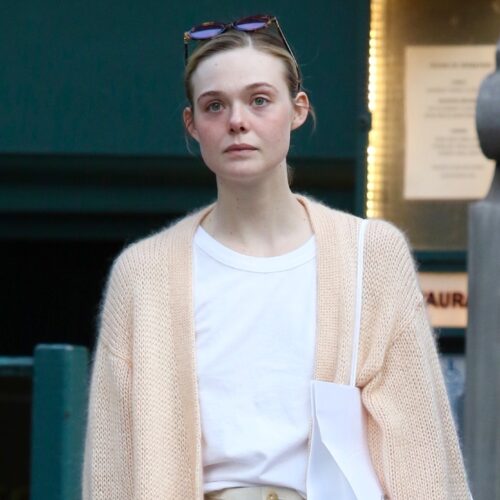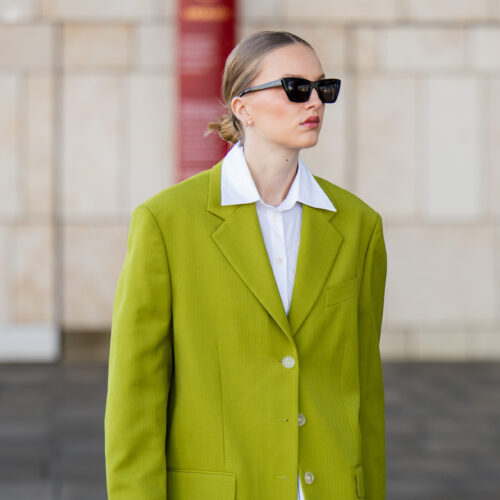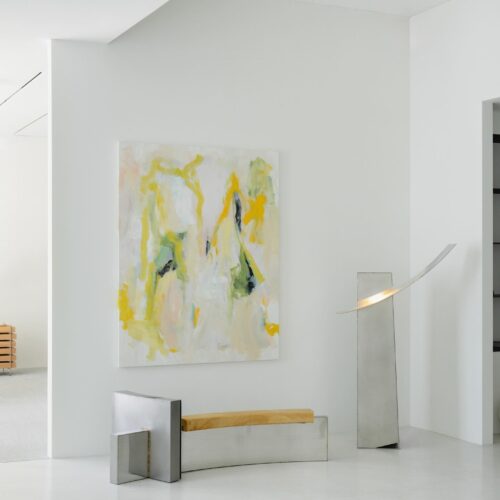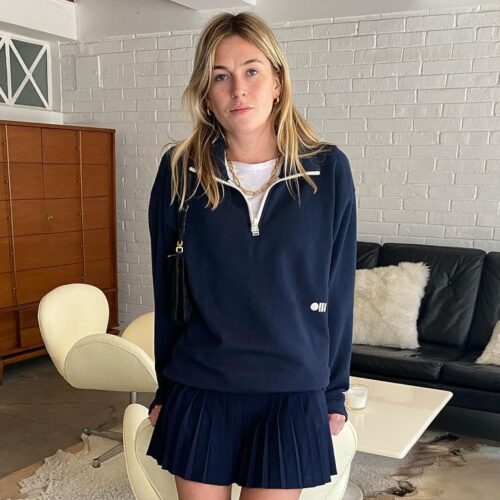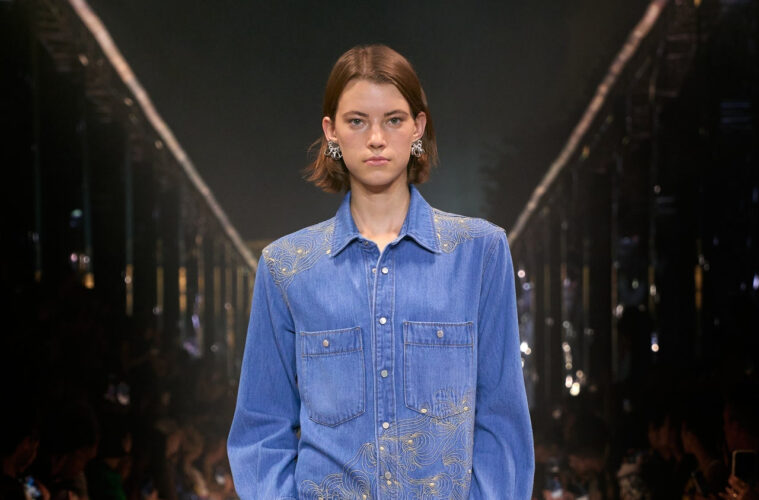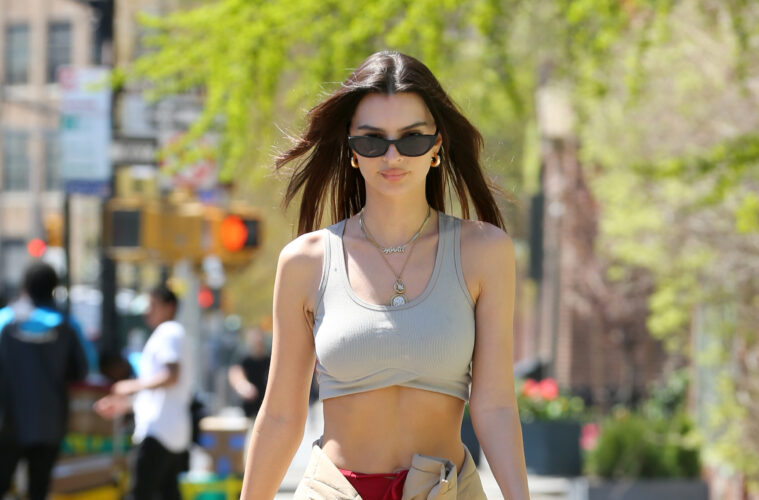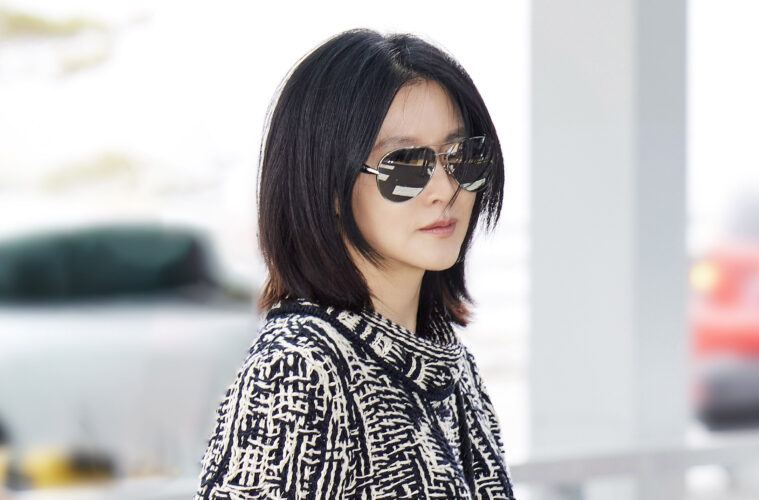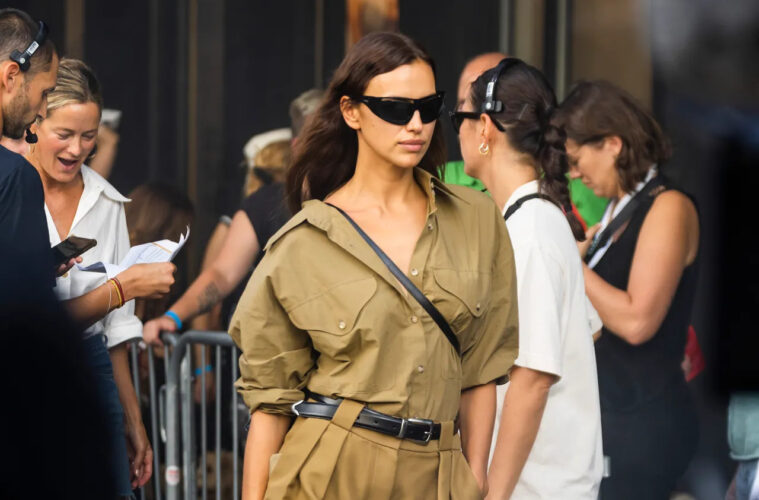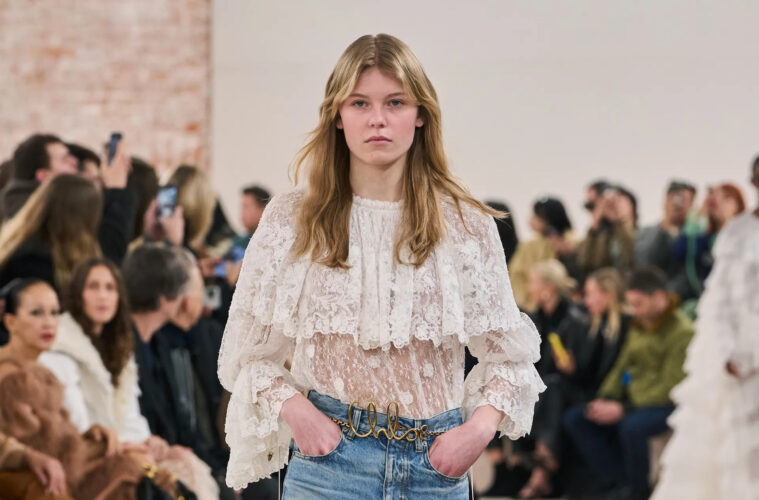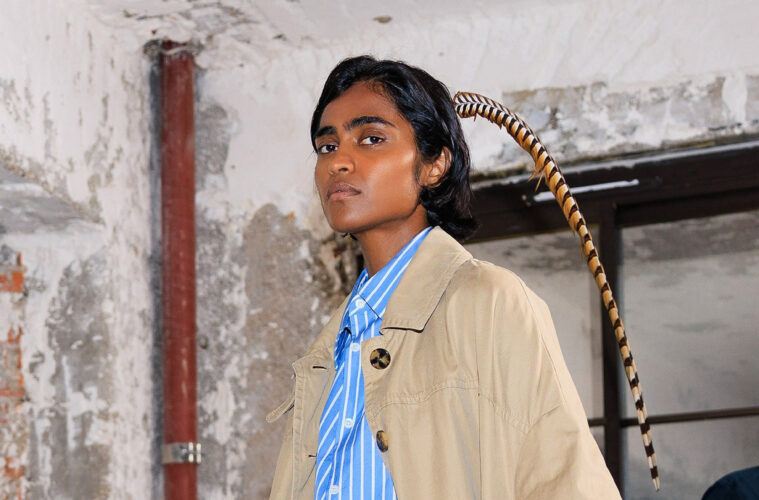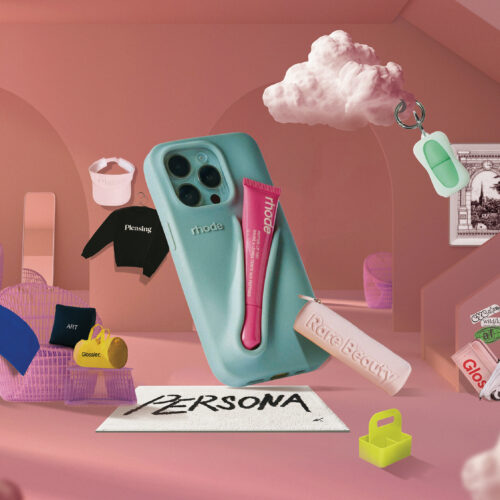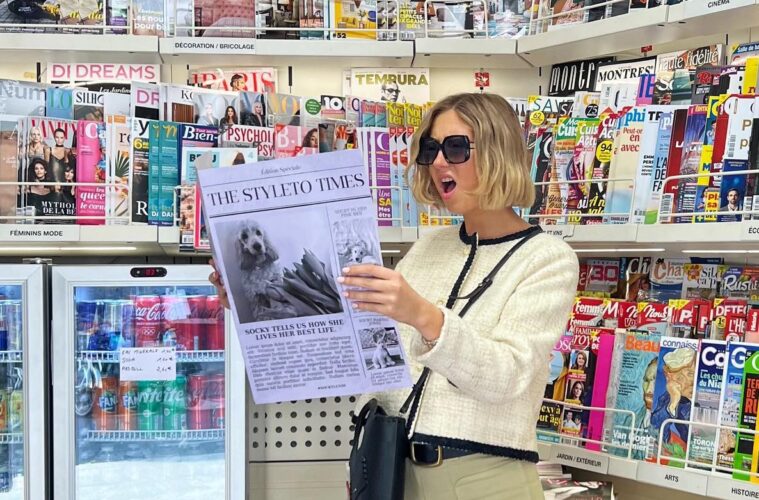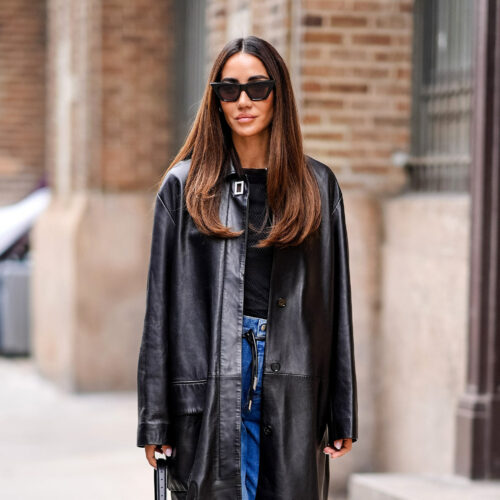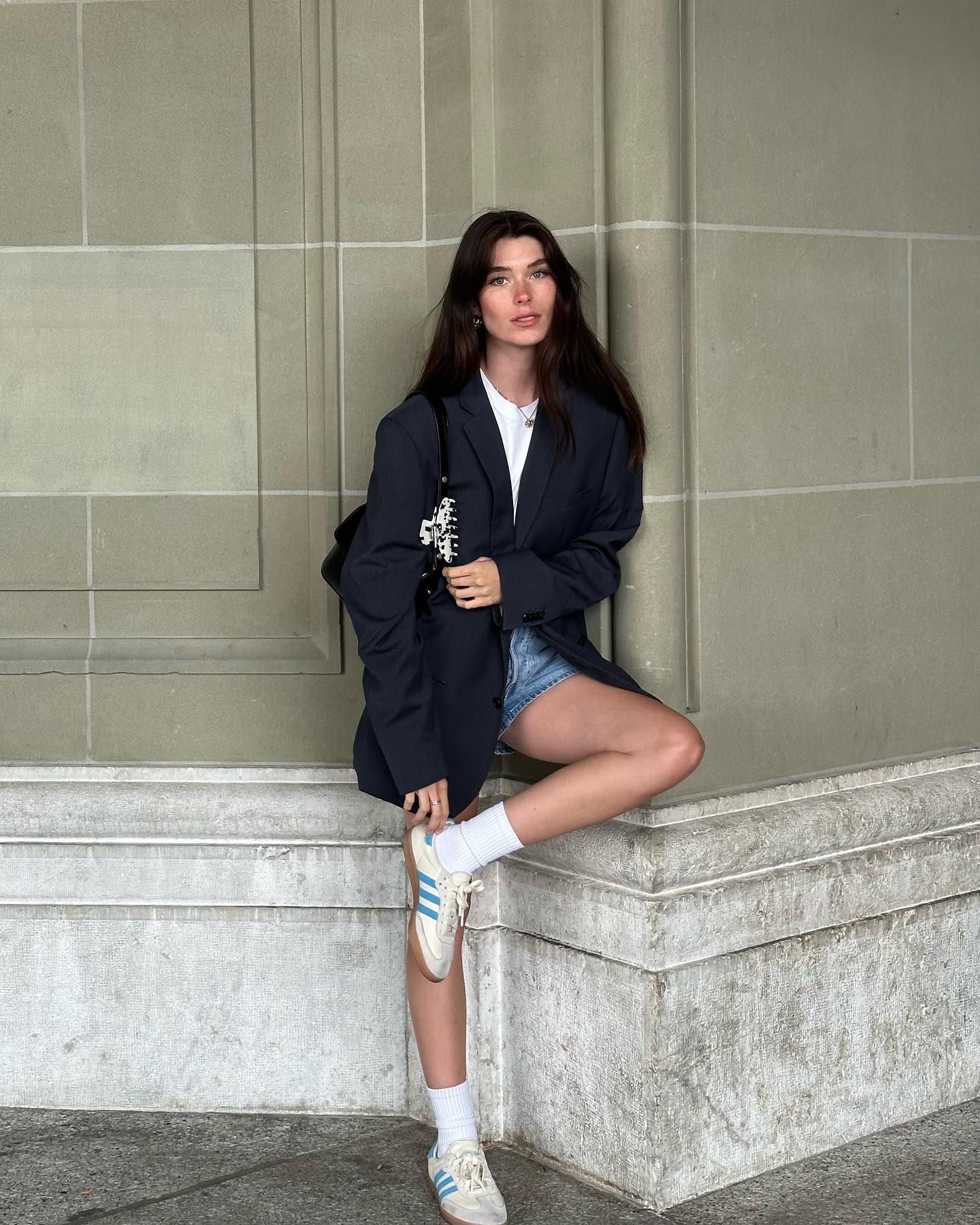젠더 뉴트럴 세대 서울의 패션 메시지

스티브J & 요니P, 2016 S/S
종아리까지 내려오는 스웨터가 남녀 모두를 위해 등장했다. 얇은 셔츠, 가벼운 코트, 헐렁한 바지와 똑같이 과감한 디지털 프린트가 남성 또는 여성에게 쓰였다. 이들이 바로 내가 한국에서 느낀 패션 이미지들이다.
‘젠더 뉴트럴’, 즉 ‘성 중립성’은 현실이다. 자하 하디드가 설계한 ‘달에 내려앉은 듯한’ DDP 빌딩에서 서울패션위크 런웨이에 쏟아져 나온 옷들이 도발적인 선언이라는 증거는 없다. 대부분은 남성복으로 유명한 디자이너들의 쇼로 여성복은 아주 소량만 등장했다. 때로는 그 반대이기도 했다.
심미적으로 두 성 간의 경계선을 흐리는 작업은 몇 십 년 동안 진행되어 왔다. 1980년대로 돌아가보면, 양성성은 주요 이슈였다. 여성들은 커다란 어깨를 한 매니쉬한 재킷을 입고 사회의 반여성적인 유리천장을 깨뜨리기 위해 투쟁했다. 그러나 서울패션위크는 좀더 점잖은 연합과도 같았다.

“우리는 바이어들에게 남성용과 여성용으로 똑 같은 옷을 만든다고 말해요. 그러나 고객들에겐 설명할 필요가 없죠. 그냥 받아들이거든요.”
얼마 전 서울 활기찬 도심에 파트너 요니P와 함께 부티크를 연 스티브J가 말했다.
이들은 자신들의 스트리트 스타일을 공식적인 행사장에 올리는 대신 그래피티 포스터가 외벽에 걸려있는, 말 그대로 길거리에서 쇼를 벌였다. 그리고 K팝 스타들은 스티브J와 요니P의 쿨한 태도에 열광했다.
남성과 여성 모두를 위한 동일한 깅엄체크의 믹스는 스티브J와 요니P 버전의 크로스드레싱이었다. 또한 남성용 코트나 여성스러운 드레스를 만들 가벼운 패브릭으로 면을 사용함으로써 두 성을 동등한 선상에 올렸다.

그러나 이 커플과 달리 여러분은 분위기의 변화를 느끼기 위해서 굳이 런던의 패션학교에서 교육을 받을 필요는 없다.
내가 신진 브랜드들을 지원하는 비이커의 한 매장에서 젊은 디자이너 무리를 만났을 때, 이들 중 많은 수가 남성과 여성 모두에게 판매하는 것에 대해 아무렇지도 않게 이야기했고 비이커의 크리에이티브 디렉터인 류순경 제일모직 전무는 이 트렌드에 힘을 실었다.

비이커 한남매장에서 수지 멘키스와 한국의 젊은 디자이너들
미키 마우스나 심슨 가족이 그려진 <스테레오 바이닐즈>의 유니섹스 스웨터는 쉽게 입게 되는, 공고한 남성/여성 드레싱 문화를 만들어냈다. <노앙>의 디자이너 남노아는 나에게 ‘젠더 뉴트럴’한 옷이라며 짧거나 종아리까지 오는 니트를 보여줬다. 남노아는 또한 또 다른 표현인 ‘브런치 의상(brunch clothes)’을 제시했다. 전 세계적이고 유니섹스한 패션 페노메논이라 할 수 있는 스마트하고 캐주얼한 일요일용 옷이었다.
이방인으로서 나는 남성과 여성 모두, 그리고 여성만큼이나 패션 추종자가 되어가는 남성들에게 어울리는 의상에는 아시아만의 특성이 있을 거란 생각이 들었다.
나는 한국에서 가장 성공한 디자이너 중 하나인 우영미와 이야기를 나눴다. 그녀의 브랜드 <Wooyoungmi>는 1년에 두 차례 파리 남성복 시즌에 쇼를 가지며 전 세계적으로 팔려나간다.
“저는 한국 남성들이 군인들 때문에 패션에 노출되기 시작했다고 생각해요.” 우영미는 서울에 장기간 주둔하고 있는 미군기지를 언급하며 카키와 카모플라주 그리고 밀리터리 테일러링이 장악하고 있는 한국 남성 스타일에 대해 이야기했다.

수지 멘키스는 작업실을 방문해 우영미와 케이티 정을 만났다
우영미 브랜드의 크리에이티브 디렉터인 케이티 정은 한발 더 나아간 생각을 가지고 있었다. “바디라인으로 말할 것 같으면, 아시아인들에겐 성별에 따른 두드러진 차이가 없어요.” 케이티 정은 서울패션위크의 런웨이 쇼에서 보았듯 두 성이 모두 가녀린 실루엣을 가졌음을 강조하며 말했다.

서울패션위크에서 수지멘키스와 박원순 서울시장
그러나 나는 젠더 뉴트럴한 의상들은 깊디 깊은 태도변화에 기인해 수많은 영역에서 받아들여지고 있다고 믿는다. 어쩌면 35년 간 일본의 식민지 지배를 받았던 역사를 지닌 한국은 남성과 여성의 패션에 있어서 새로운 그림을 그려나갈 수 있는 이상적인 문화를 가졌을지도 모른다.
D.GNAK: 강하고 부드럽게
래퍼들이 런웨이 끝에서 음악과 말들을 쏟아내면서 엣지 있고 저돌적인 분위기를 만들어가고 모델들은 대부분 검은색 옷을 입고 삭발한 머리로, 또는 후디나 모자를 뒤집어쓰고 성큼성큼 걸어 나왔다. 옷들은 오버사이즈이면서 정사각형 모양으로 재단됐으며, 약간은 저돌적이고 뉴욕 다운타운에서 볼 수 있을 법 했다.

디그낙, 2016 S/S
그리고 나서 디자이너 강동준은 말 그대로 음악을 바꿨다. 새로운 뮤지션은 애처롭고 거의 불교신자와도 같았다. 그리고 옷들은 곱고 차분하게 재단되거나 더욱 많은 원형 장식이 재킷 뒤 또는 거즈처럼 얇고 투명한 톱 위에 좀더 드라마틱하게 들어갔다.

디그낙, 2016 S/S
로열 퍼플로 색조가 바뀌면서 마치 디자이너에겐 해야 할 이야기가 있는 것처럼 느껴졌다. 설사 그 말들이 잘못 전해졌다 하더라도, 옷들은 여전히 스타일리시 했다.

디그낙, 2016 S/S
RESURRECTION: 남자가 쇼를 훔치다
<레쥬렉션>을 통해 디자이너 이주영은 남성 뿐 아니라 강한 여성들에게 강한 압력을 넣었다.
어두운 부분을 지닌 하얀색은 쇼에 충격적인 이미지를 선사했다. 그러나 이는 혈기 넘치는 여성복이 여전히 남성복에 이은 2인자 역할을 맡고 있는 서울패션위크의 수많은 브랜드 중 하나일 뿐이었다.

레쥬렉션, 2016 S/S
<레쥬렉션>의 모델들이 등장하자 “결단력 있는”이란 표현이 단번에 떠올랐다. 옷들은 거칠고 노련해 보였지만 때론 얇고 가볍고 심지어 투명하기까지 한 패브릭에 녹아 들었다.

레쥬렉션, 2016 S/S
이 컬렉션은 남녀 간 의상교차의 좋은 예가 되었다. 그러나 예쁜 옷들은 모두 남자들이 가져갔다.
BLINDNESS: 오버사이즈 양성성
신규용 디자이너의 <블라인드니스> 쇼에서 등장한 후디와 루즈하고 흐르는듯한 라인은 더욱 엣지를 갖추려는 믿음직스러운 스트리트 스타일에 가까웠다.

블라인드니스, 2016 S/S
좁은 데님들은 이 젊은 남성복 라벨이 주도하는 비율의 게임에서 오버사이즈 셔츠와 겨뤘다. 신규용은 서울패션위크에서 <블라인드니스>의 2016 S/S 컬렉션을 젊은 인재들에게 바쳐진 공간에서 공개했다.

블라인드니스, 2016 S/S
커다란 글자로 쓰여진 ‘Civil Liberty’는 스트리트 패션에 대한 선언이었다. 후디, 그리고 커프스가 손등을 덮는 길다란 소매가 등장했고 데님이 신중하게 사용됐다. 이는 <블라인드니스> 컬렉션에 스포티한 에너지를 선사했다.
KYE: 스네이크 앤 스파클
<카이>에게 올해는 뱀의 해인가? 서울패션위크에서 공개된 2016 S/S 쇼에서 패턴과 프린트가 남성복과 여성복 모두에 쓰였다.

카이, 2016 S/S
여성복은 좀더 공격적인 효과와 대조적으로 반짝이는 금속사가 쓰였다. 남성복에는 뱀 패턴이 좀더 자주 쓰이면서 <카이> 컬렉션은 도회적이면서 쿨한 방식으로 양성 간에 미묘한 차이를 보여주었다.
한국이 현대적인 캘리그래피의 나라이기 때문에 나는 <카이> 컬렉션에서 장식글자를 등장시킨 것이 현명했다고 생각한다. 엣지 있는 컬렉션을 위해 반항적인 태도의 모델들이 입은 스웨트셔츠에 ‘Hate’이라는 단어가 자수로 새겨졌다 하더라도 말이다.

카이, 2016 S/S
그러나 디자이너 계한희의 주장에도 불구하고 ‘모든 이들은 자신의 친구를 미워하는 걸 좋아한다’라는 전제는 남성과 여성 모두를 위한 스타일리시한 의상에는 반영되지 않았다.
English Ver.
#SuzySFW: Generation ‘Gender Neutral’- Seoul’s Fashion Message
Calf-length sweaters worn by both sexes, light shirts, airy coats, loose trousers and the same bold, digital prints for men or women – these are the fashion images I am taking away from South Korea.
“Gender neutral” is the real story. There is no suggestion that the clothes coming down the runway in Seoul, at the “moon-landing” DDP building designed by Zaha Hadid, are sent out as a provocative statement. Many of the shows seem to be from designers known for their menswear, who offer a handful of outfits for women, or occasionally vice versa.
Aesthetically, blurring those gender lines has been going on for decades. Back in the 1980s, androgyny was a major statement as women stomped out in big-shouldered, mannish jackets to break society’s anti-female glass ceilings. But the Seoul Fashion Week offerings were more likely to be gentle unions.
“We tell the buyers that we have the same clothes for men and women, but we don’t have to explain that to our customers – they get it,” said Steve J, who with his partner Yoni P has just opened a boutique in lively downtown Seoul.
They chose to stage their street style not in the official show space, but literally on the street, with graffiti posters attached to outside walls and the cool attitude that makes them favourites of the K-Pop stars.
Mixes of the same gingham checks for male and female were the duo’s version of cross-dressing, while the use of cotton as a light fabric for a male coat or a feminine dress brought the two sexes together.
But, unlike that couple, you don’t have to be trained at fashion colleges in London to feel the change in the air.
When I visited a group of young designers at a branch of Beaker, a Seoul store that supports upcoming brands, several of them spoke casually about selling to both sexes – a trend confirmed by Soon-Kyung Ryu, the store’s Vice President.
Unisex sweaters from Stereo Vinyls with allusions to Mickey Mouse or The Simpsons are the easy-to-grasp, established culture of man/woman dressing. While Noah Nam, the designer behind Nohant, showed me short or calf-length knits that he said were gender neutral. Noah also came up with another definition: “brunch clothes”, suggesting that smart-casual Sunday clothes have become a worldwide – and unisex – fashion phenomenon.
As an outsider, I felt that there was an Asia-specific element to clothes being appropriate to both sexes and men being fashion followers as much as women.
I talked to Woo Youngmi, who is one of Korea’s most successful designers, shows her Wooyoungmi brand twice a year in the Paris menswear season and sells globally.
“I think that Korean men were really opened up to fashion by the army,” said the designer, referring to the long-established American army base in Seoul and the way that khaki, camouflage and military tailoring are endemic to Korean male style.
The brand’s creative director, Katie Chung, had further thoughts. “In terms of body shape, for Asians there is not a significant gender divide,” she said, underscoring the slight silhouettes of both sexes – as seen in Seoul Fashion Week’s runway shows.
But I believe that gender neutral clothes are being accepted in so many different arenas because of a profound change in attitude. Maybe Korea, with its history interrupted by Japanese colonial rule for 35 years, has been the ideal culture on which to draw men and women’s wardrobes in a new way.
D.GNAK: HARD AND SOFT
The rappers, blasting out words and music live at the end of the runway, created an edgy, aggressive mood as models strode out, mostly in black, either shaven-headed or hidden under a hoodie or cap. The clothes were oversize, square cut, slightly aggressive and could have been found in downtown New York.
But then designer Kang Dong-Jun changed the music – literally. His new musician was plaintive and almost Buddhist, the clothes either finely and calmly tailored, or with more insertions of circular embellishment on the back of a jacket, or more dramatically on a gauzy, transparent top.
As the colour switched to a royal purple, it was as though the designer had a story to tell. Even if it was lost in translation, the clothes remained stylish.
RESURRECTION: MEN STEAL THE SHOW
At Resurrection, designer Juyoung Lee gave a powerful push for strong women as well as men.
White – but with a dark side – gave a striking image to the show. But this was one of the many brands at Seoul Fashion Week when feisty womenswear still played second fiddle to menswear.
“Purposeful” was the word that sprang to mind as the Resurrection models strode out in clothes that were tough and streetwise but often melted into light, airy and even transparent fabrics.
It was a good example of gender crossing. But the men got all the best pieces.
BLINDNESS: OVERSIZE ANDROGYNY
Hoodies and loose, streamlined shapes from Shin Kyu Yong of Blindness made for a confident street style that could have been pushed further to the edge.
Narrow denim pieces competed with oversize shirts to show the game of proportions played by this young menswear label. He showed the spring/summer 2016 collection of his Blindness brand at Seoul Fashion Week in a space dedicated to young talent.
“Civil Liberty” printed in large letters made a statement for the streetwear, which included hoodies, oversize sleeves that brought shirt cuffs over the hands and a judicious use of denim. This gave a sporty energy to the Blindness collection.
KYE: SNAKES AND SPARKLES
Is it the Year of the Snake for Kye? Patterns and prints for both sexes appeared in this spring/summer 2016 show at Seoul Fashion Week.
Women’s looks included sparkly tinsel as a contrast to the more aggressive effects. With the snake patterns mostly on the masculine side, the Kye collection showed the subtle differences between the sexes in a way that looked urban and cool.
Since South Korea is a country of modernist calligraphy, I thought it was smart to see decorative writing in the Kye collection – even if the word “Hate” was embroidered on sweatshirts to give an edge to the collection, worn by models with plenty of attitude.
But in spite of Kathleen Kye’s claim, her premise that everyone “loves to hate their friends” was not mirrored in the stylish clothes – for both sexes.


